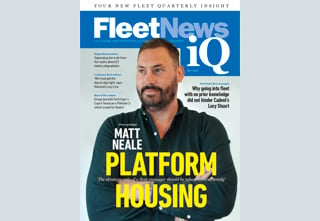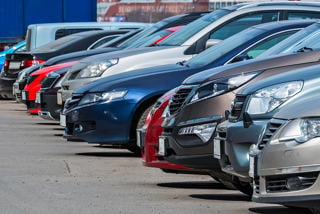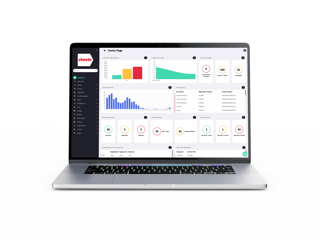“Drivers are thinking ‘hang on a second, we opted out when tax was high but now things have changed quite a bit’,” he says.
Another reason why staff are re-considering is the action taken by companies.
Some have put in place strict criteria for cars acquired by cash takers if they are used for 5, such as age and CO2 limits.
Private vehicles are typically older than company cars with higher emissions. Hollick suggests the average grey fleet car is eight years old.
But while organisations have been taking greater control over cash allowance grey fleets, they also recognise that there is no substitute for the company car when it comes to safety, cost and environmental concerns.
“Organisations have, increasingly, been focused on lowering their carbon footprint,” says Rose.
“Not only is this good from CSR and brand perspective, but lower CO2 emissions also equate to lower running costs.
“It is harder to control which vehicles cash takers are driving and, therefore, harder to manage the carbon footprint of such vehicles.”
It is also more difficult to ensure the roadworthiness of a driver-owned vehicle where the responsibility for repair, service and maintenance is left to the individual.
“Organisations understand that encouraging employees back into company cars reduces the corporate risk,” Rose adds.
More recently, salary sacrifice schemes (whereby an employee sacrifices a proportion of their salary in return for a company car) are playing a role.
“Smaller fleets are using salary sacrifice as a tool to get staff out of cash for cars and back into the fleet,” according to Francis.
LeasePlan has also seen several of its clients successfully using salary sacrifice schemes in this way.
“Salary sacrifice will be the biggest trend going forwards,” predicts Helen Fisk, AutoSolutions manager at ALD Automotive.
“It pulls cash allowance drivers back into the fold.”
Companies are also using affinity schemes according to Hollick, with Alphabet seeing an uptake of its affinity product, AlphaDrive.
Over paying cash allowances
There are potential savings from getting cash allowance drivers back into company cars.
Companies regularly pay far more to a cash taker than the equivalent company car driver, according to Mackney.
“One company was paying cash allowances and 35 pence per mile for business mileage,” he says.
“It cost about £1,000 a year more for each cash taker then the equivalent company car.
Rawlings agrees that companies should assess how cash allowances have been calculated.
“We often say to clients how did you work out the cash allowance? And it’s either very simplistic or they’ve forgotten how it was worked out. It’s one of the first areas to look at to save money.”
However, once cash allowances have been set high it can be difficult to change them. If the company car costs £5,000 a year but you’ve been giving the employee £7,000 a year in cash it’s a difficult conversation to have.
Complicating the issue further is that the employee may not be using all of the money for a car – it may be going towards school fees or a mortgage, for instance. “Once an employee has a financial arrangement – such as a 10-year loan – it can be hard to pull them back in,” Fisk adds.
And then there is the thorny issue of AMAP rates.
“The public sector often pays above AMAP rates and it makes it even harder to reduce cash allowances,” says Mackney.
“Drivers see it as a perk of the job.”
The future
While cash allowances have a future, some experts predict that, if they are managed correctly, there will be fewer available.
Geography and company culture have a part to play. Cash allowance schemes remain popular with American-owned companies while employees in London prefer to take the cash.
At Chivas Brothers, London-based employees are not returning to the company car scheme.
“We have two offices in London and employees there think they can do without a car altogether,” Campbell says.
“They can take the cash and use it to buy a season ticket for the train or the tube. There is also the hassle of parking in London.
“We probably have as many people opting back into the scheme as opting out – for very different reasons.
“I think we’ve seen the peak of cash allowances but they have a future in areas where there is a credible alternative to the car.”
Rawlings believes that there will always be some employees who prefer the flexibility of cash.
“There is a place for cash allowances,” he says. “Modern employees want choice.”
And Fisk adds: “Cash allowances won’t ever be completely eroded.”























Login to comment
Comments
No comments have been made yet.